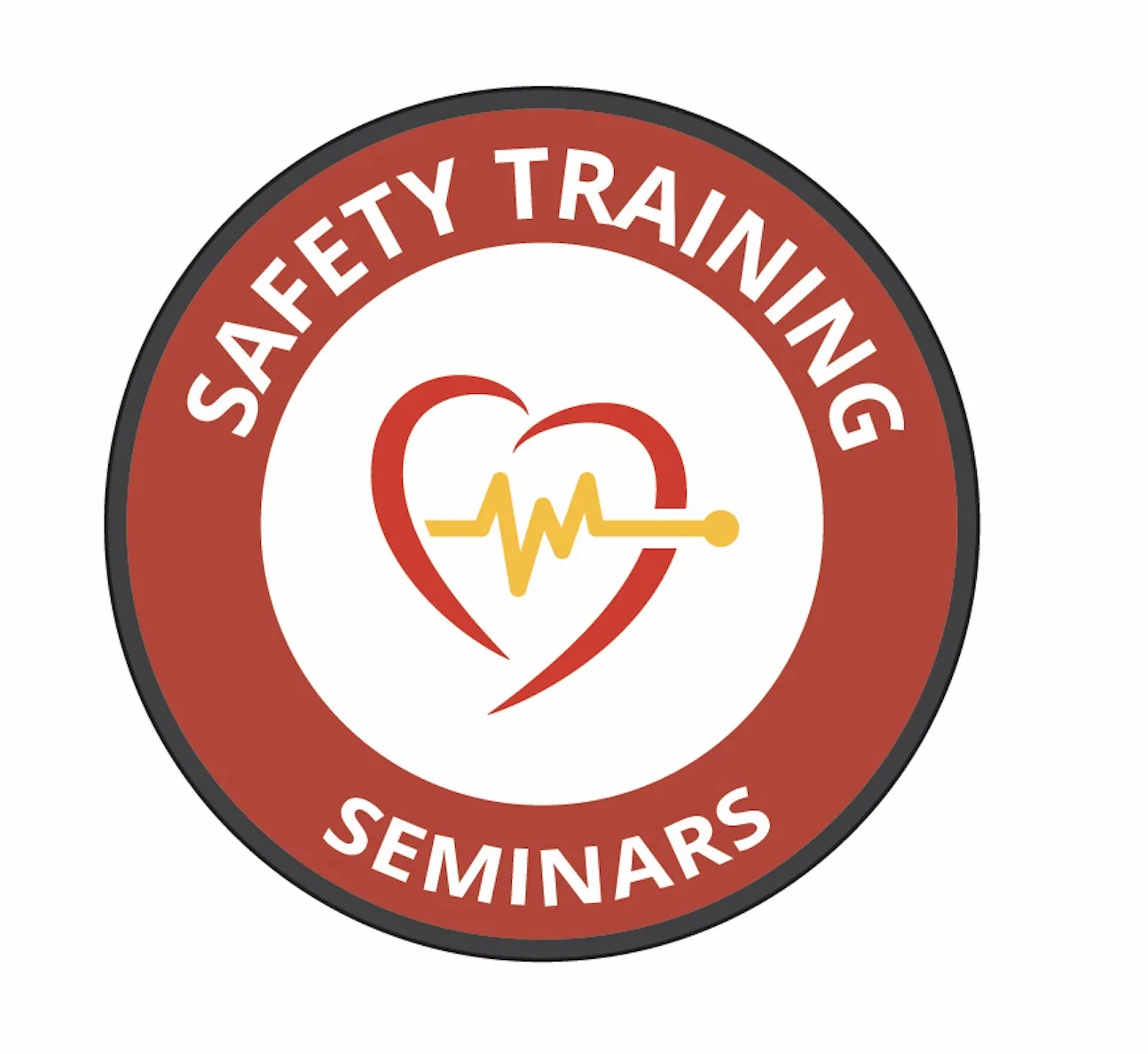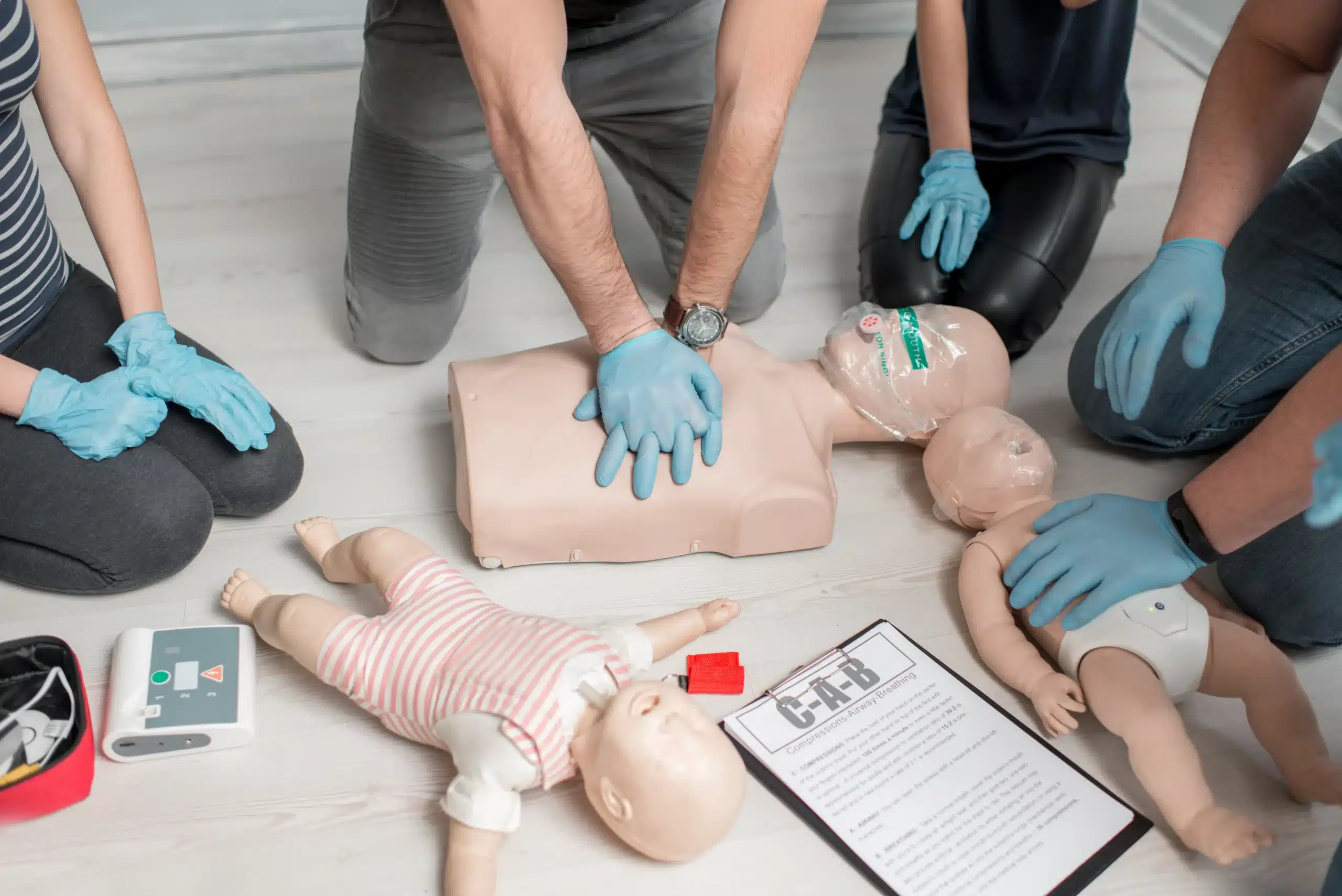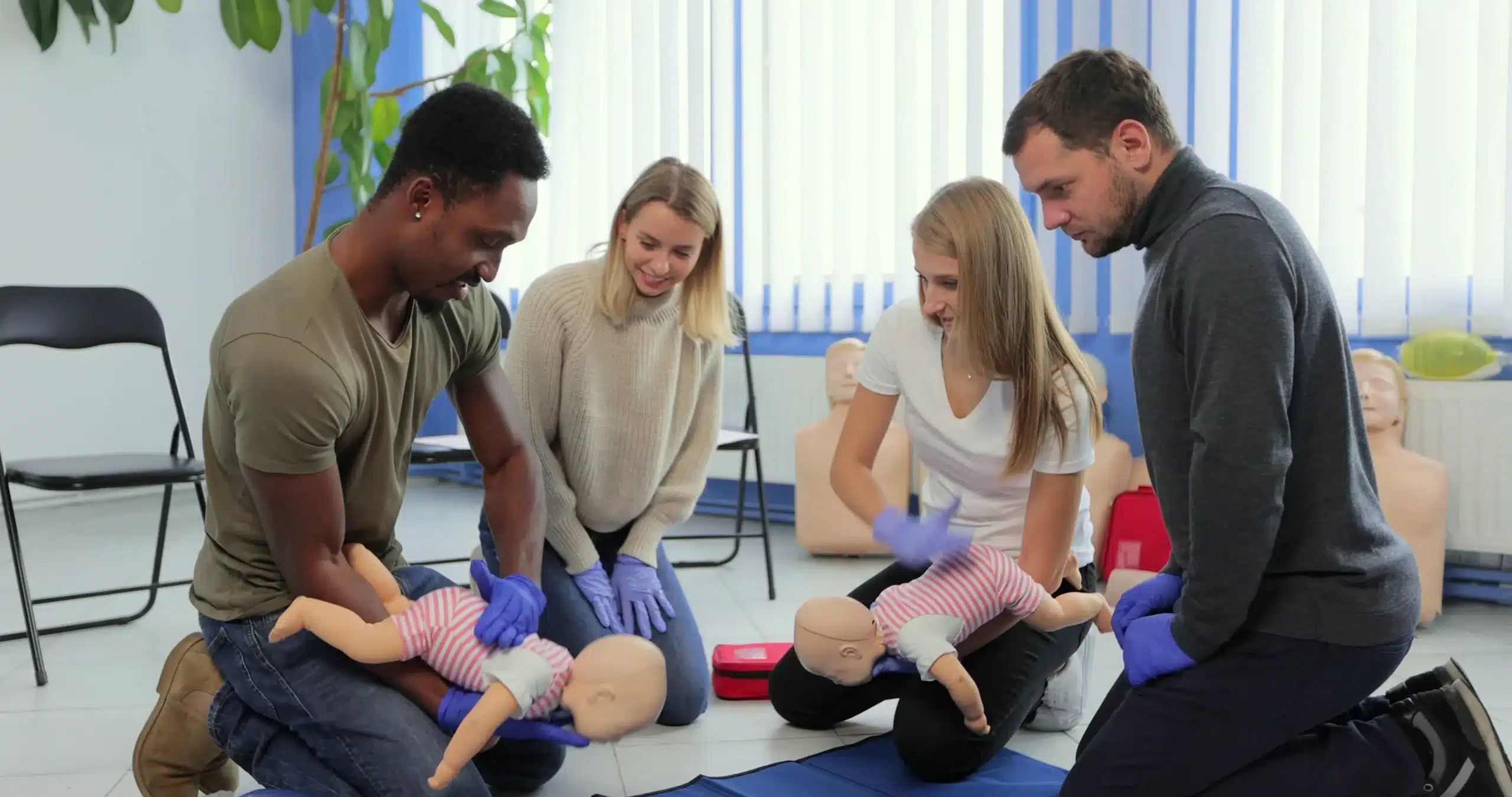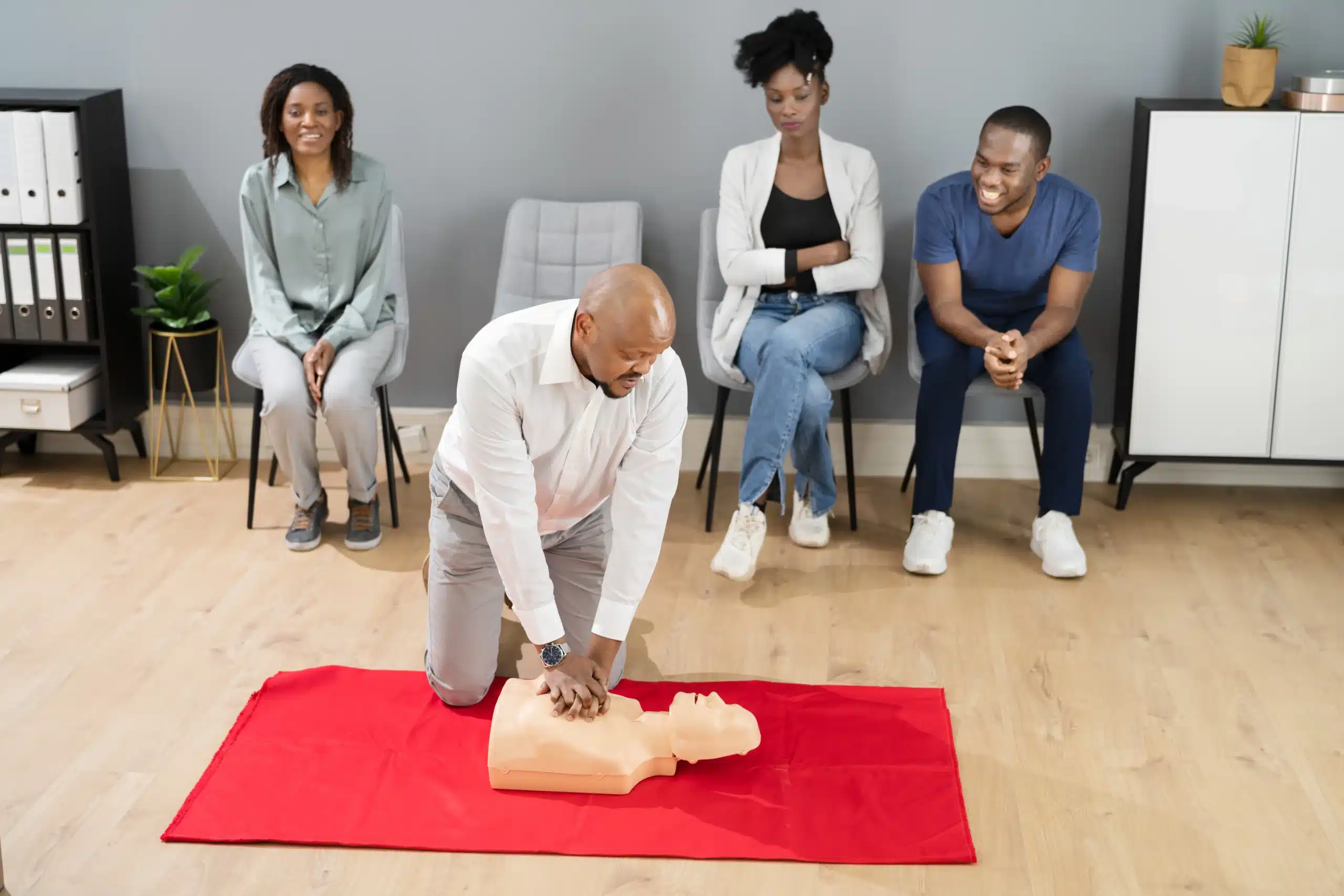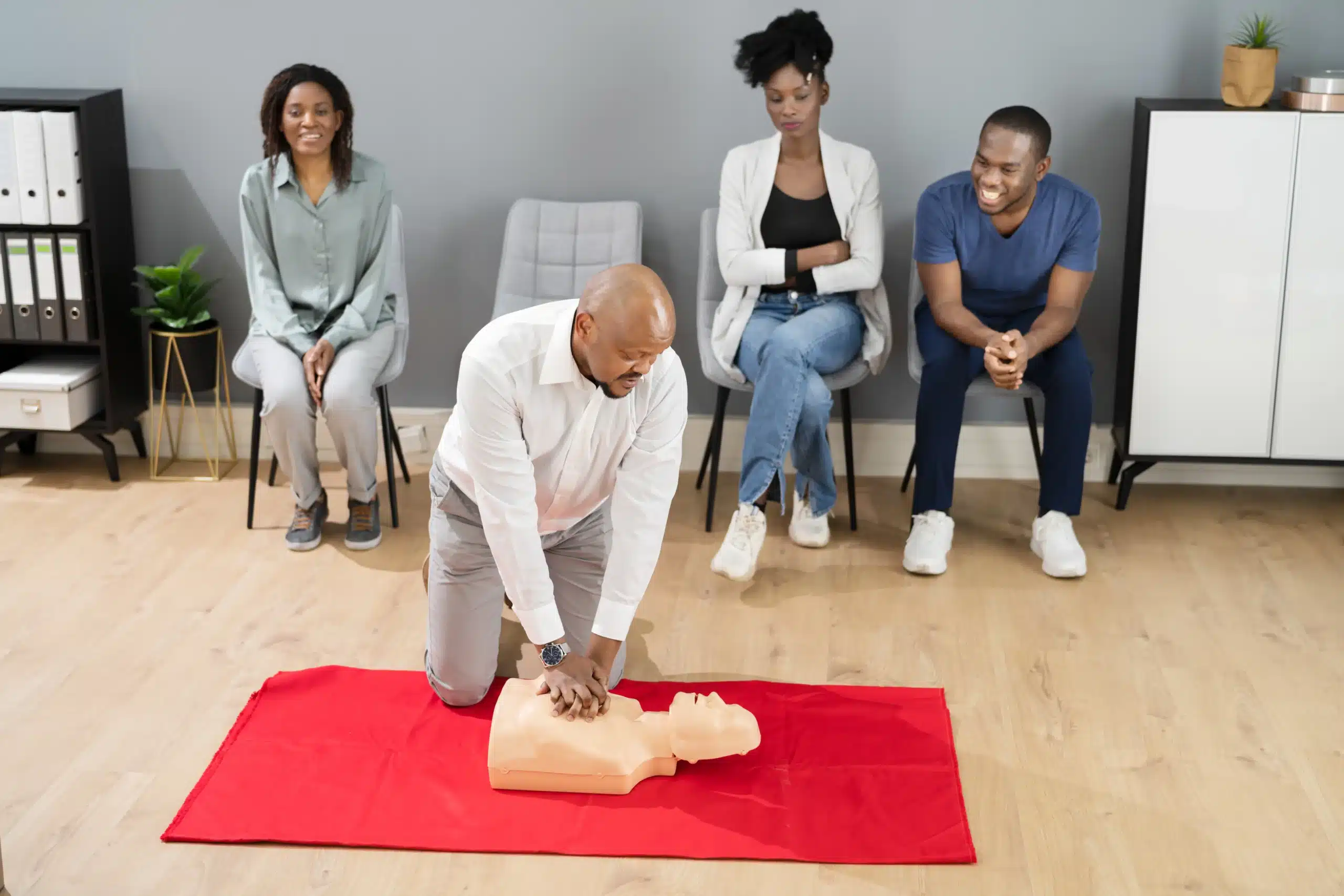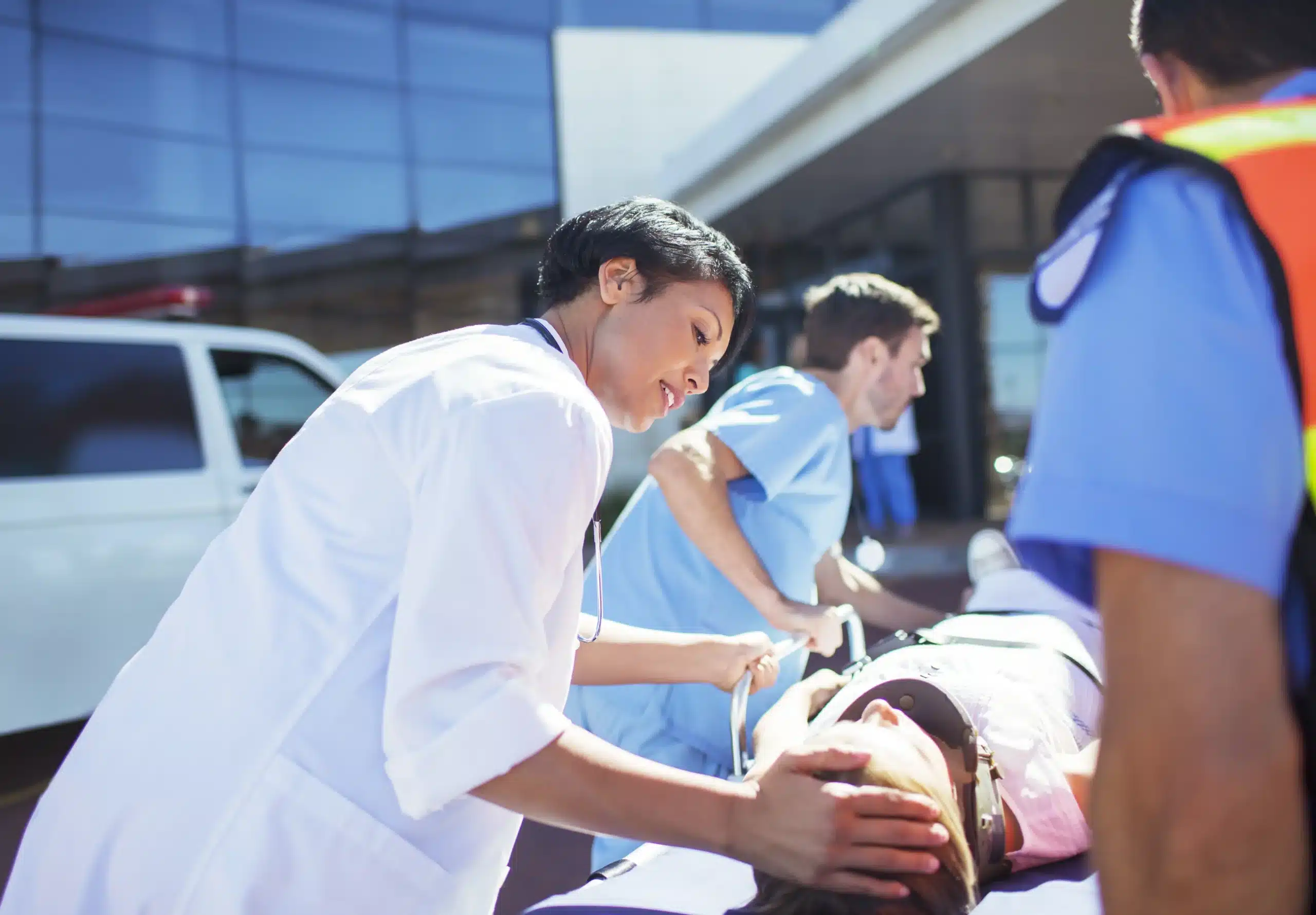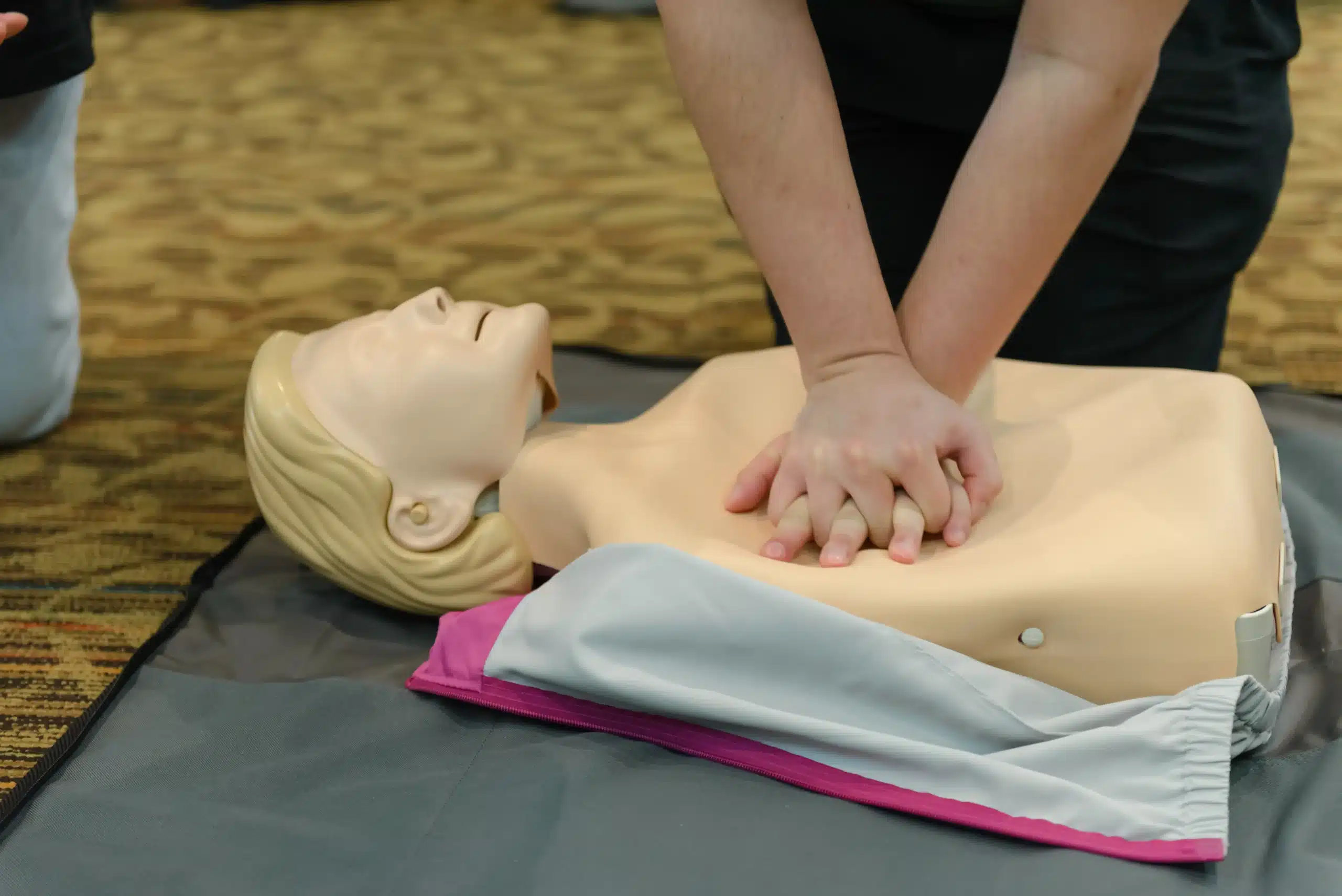Emergencies happen. Being prepared can make all the difference. This comprehensive guide simplifies everything about CPR certification in SF, from understanding the basics of CPR to finding the right course for your needs. Whether you’re a healthcare provider, work with children, or simply want to be equipped to handle unexpected situations, we’ll cover the various CPR certifications, course formats (in-person, online, blended), costs, and how to renew your certification. We’ll also explore some of the top CPR training providers in the San Francisco Bay Area, including the American Heart Association, the American Red Cross, and Bay Area CPR. Let’s equip you with the skills and confidence to make a difference.
Key Takeaways
- CPR certification equips you to save lives: Learning CPR and other lifesaving techniques empowers you to respond effectively in medical emergencies, increasing the chances of survival for those in need.
- Find the right CPR course for your needs: Consider factors like your profession, personal goals, and schedule when choosing a course. Bay Area CPR offers a range of AHA-certified options, including BLS, ACLS, PALS, and Wilderness First Aid, with convenient locations across the Bay Area.
- Maintain your CPR skills with regular renewals: Keep your certification current with renewal courses offered by providers like Bay Area CPR. Staying up-to-date ensures you remain confident and prepared to handle emergencies.
What is CPR Certification?
CPR certification shows you know how to perform cardiopulmonary resuscitation (CPR) and other lifesaving skills. It’s often required for healthcare professionals and a good idea for anyone who wants to handle emergencies. It’s proof that you’ve completed a recognized CPR course and can confidently step in when needed. This certification covers essential techniques like chest compressions and rescue breaths, vital for keeping someone alive until professional help arrives.
What is CPR?
CPR, or cardiopulmonary resuscitation, is a lifesaving technique used when someone’s breathing or heartbeat stops. Think cardiac arrest, drowning, or other situations where someone needs immediate help. CPR involves chest compressions, sometimes combined with rescue breaths. These actions help circulate blood and oxygen to the brain and other vital organs, buying precious time. Learning CPR can make you a vital link in the chain of survival.
Why is CPR Training Important?
CPR training equips you with the skills to respond effectively during medical emergencies. Knowing CPR can dramatically increase someone’s chances of survival. It empowers you to act quickly and confidently in critical situations, potentially saving a life. From cardiac arrest and near-drowning to other unexpected events, CPR training gives you the tools to make a real difference.
Which CPR Course is Right for Me?
Different professions require specific certifications. Healthcare providers, educators, and those working with children often need CPR certification for their jobs. It’s important to choose a course that aligns with your professional requirements and personal needs. Consider your career goals, the type of environment you work in, and any requirements set by your employer or licensing board. Bay Area CPR offers a range of courses to help you find the right fit.
Where to Get CPR Certified in San Francisco
Finding the right CPR class can feel overwhelming with so many options. This section breaks down some of the leading CPR training providers in San Francisco to help you find the best fit.
American Heart Association
The American Heart Association (AHA) is a well-known and respected name in CPR training. Their evidence-based programs are recognized internationally and offer a variety of courses to fit different needs. The AHA focuses on high-quality training to prepare people for real-life emergencies.
American Red Cross
The American Red Cross also offers comprehensive CPR classes in San Francisco. Their training is designed to equip you with the skills and confidence to handle emergencies. The Red Cross is a trusted source for CPR certification and offers various course formats.
Bay Area CPR
Bay Area CPR offers a range of American Heart Association-certified courses, including BLS, ACLS, PALS, and Wilderness First Aid. With flexible scheduling and multiple locations across the Bay Area—including San Francisco, Daly City, San Mateo, and Oakland—they make it easy to find a class that works for you. They cater to various professions requiring CPR certification, from healthcare providers and educators to those working with children.
San Francisco Fire Department (NERT)
The San Francisco Fire Department’s Neighborhood Emergency Response Team (NERT) program is a valuable community resource. NERT provides free CPR and First Aid training, including disaster preparedness. This program helps residents develop the skills to assist their communities during emergencies.
CPR Certification Institute
The CPR Certification Institute offers various CPR, AED, and First Aid certification and recertification courses throughout California. They aim to provide accessible and comprehensive training, making them a convenient option for many.
CPR Course Formats, Options, and Costs
Finding the right CPR course means understanding the different formats, what each course covers, and how much they cost. Let’s break down your options so you can choose wisely.
In-Person CPR Training
In-person CPR training offers hands-on learning with a certified instructor. This format gives you real-time feedback and lets you practice skills on mannequins, creating a more interactive learning experience. The American Heart Association’s programs are known for their effectiveness, and many prefer this direct approach. In-person classes are great for those who learn best through tactile, hands-on experiences and direct interaction. Bay Area CPR offers in-person training at various locations throughout the Bay Area, making it easy to find a class near you.
Online CPR Courses
Online CPR courses offer flexibility and convenience, allowing you to learn at your own pace, wherever you have internet access. This format often includes interactive modules, videos, and quizzes. While online CPR renewal is generally more affordable, it typically doesn’t include hands-on practice. Some organizations require in-person skills validation, so check the specific requirements for your field.
Blended Learning CPR Courses
Blended learning combines online learning with in-person skills sessions. This approach lets you complete the coursework online at your own pace, then attend an in-person session for hands-on practice and feedback from a certified instructor. It’s a smart option for busy people who still want the benefits of in-person instruction.
Course Length and Content
The length and content of a CPR course depend on the specific certification. Basic CPR courses usually cover adult, child, and infant CPR, along with AED training and choking relief. More advanced certifications, such as ACLS (Advanced Cardiovascular Life Support) or PALS (Pediatric Advanced Life Support), are designed for healthcare providers and cover more complex scenarios. Wilderness First-aid courses focus on providing care in remote locations. Course length can range from a few hours for basic CPR to several days for advanced certifications.
CPR Course Costs
CPR course costs vary depending on the type of course, the training provider, and the location. Basic CPR classes typically cost between $50 and $150, while more specialized certifications like ACLS or PALS can be more expensive. Compare pricing from different providers to find the best fit for your budget. Check with Bay Area CPR for current pricing.
What Affects CPR Course Costs?
Several factors influence CPR course costs. More advanced certifications require more training and instructor expertise, which impacts the price. Location can also affect pricing, as costs can differ between areas. Finally, each training provider sets their own pricing.
CPR Course Discounts and Promotions
Many employers offer free or discounted CPR training, so check with your HR department. Some training providers also offer discounts for groups or students. It’s always worth asking about potential cost savings.
Enrolling in a CPR Course
So, you’re ready to learn CPR? Great! This section covers everything you need to know about enrolling in a course, from age requirements to common misconceptions that might be holding you back.
Age and Physical Requirements
There aren’t strict age limits for learning CPR. The American Heart Association guidelines state that children as young as nine can learn modified CPR. While there are no formal physical requirements, CPR does involve performing chest compressions and other physical actions. If you have any concerns about your physical abilities, chat with your chosen training provider—like Bay Area CPR—before signing up for a class. CPR courses are designed to be accessible to people of varying physical capabilities. And don’t worry too much about the cost; CPR certification courses are generally affordable, typically ranging from $75 to $150.
Do I Need Prior Training?
Nope, you don’t need any previous medical training to enroll in a CPR course. Classes cater to complete beginners as well as healthcare professionals looking to refresh their skills. Many professions, such as healthcare workers, educators, and those working with children, often require CPR certification. Even if it’s not required for your work, having these skills can be incredibly valuable in any situation.
How to Enroll in a CPR Course
Finding and enrolling in a CPR course is straightforward. Start by searching online for “CPR classes near me” or check with local organizations like the American Red Cross or community centers. Bay Area CPR offers a variety of courses and schedules throughout the San Francisco Bay Area. If you’re unsure which course is right for you, reach out to a training provider for guidance. They can help you choose the best option based on your individual circumstances.
Common CPR Training Myths
Let’s debunk some common myths that might be preventing you from taking the plunge:
- Myth #1: CPR is expensive. While there is a fee associated with certification, it’s a small price to pay for a potentially life-saving skill. Many organizations offer discounts or payment plans to make training more accessible.
- Myth #2: CPR involves mouth-to-mouth resuscitation on strangers. While traditional CPR did include rescue breaths, many courses now emphasize hands-only CPR, which focuses solely on chest compressions. This method is just as effective in many situations and can be less intimidating for new learners.
- Myth #3: CPR training is difficult. CPR courses are designed to be straightforward and easy to understand, even for those with no medical background. Instructors break down the steps clearly and provide plenty of opportunities for practice.
Get and Keep Your CPR Certification
Getting CPR certified is straightforward, but staying current takes a little planning. This section covers getting certified, how long your certification lasts, how to renew, and choosing the right course.
Certification Process and How Long it Lasts
The American Heart Association (AHA) sets the standard for CPR and life support training. Their programs are known for being evidence-based and effective. After completing an AHA-certified course, like those offered by Bay Area CPR, you’ll receive a certification card, typically valid for two years. This timeframe ensures healthcare providers and other professionals stay up-to-date with the latest guidelines.
Renewing Your Certification
Before your certification expires, you’ll need to take a renewal course. Bay Area CPR offers various renewal options to fit your schedule and learning style, from in-person classes for hands-on practice to convenient online courses. In-person training allows direct interaction with instructors and a valuable opportunity to practice your skills. Online renewal is often more budget-friendly, making it accessible to more people.
Choose the Right CPR Course
The right CPR course depends on your needs. Bay Area CPR offers a variety of courses, from basic CPR to advanced certifications like ACLS (Advanced Cardiovascular Life Support) and PALS (Pediatric Advanced Life Support). Consider why you want certification. Are you a healthcare professional, a childcare provider, or preparing for emergencies? Think about the time you can commit. Bay Area CPR offers flexible scheduling with classes throughout the San Francisco Bay Area (San Francisco, Daly City, San Mateo, and Oakland). They also offer Wilderness First-aid for outdoor enthusiasts.
Benefits of CPR Certification
Getting CPR certified offers a range of benefits, from tangible career advantages to the profound ability to help someone in a crisis. Whether you’re required to have certification for your job or simply want to be prepared, the advantages are numerous.
Improve Your Lifesaving Skills
CPR certification equips you with the skills to respond effectively during medical emergencies. In a CPR class, you’ll learn the proper techniques for performing CPR on adults, children, and infants. You’ll also learn how to use an automated external defibrillator (AED) and how to help someone who is choking. These skills can make a critical difference in situations like cardiac arrest, near-drowning, or other breathing emergencies. Bay Area CPR offers a variety of courses to fit your needs.
Meet Job Requirements
Many professions require CPR certification. Healthcare providers, educators, childcare professionals, and lifeguards often need to show proof of current certification. Even if it’s not mandatory, having CPR training can make you a more competitive candidate and demonstrate your commitment to safety. Check specific requirements for your industry or employer, as some may require certification from a particular organization like the American Heart Association.
Gain Confidence in Emergencies
Knowing you can potentially save a life can boost your confidence in emergencies. Instead of feeling helpless, you’ll have the skills and knowledge to take action. This confidence can be invaluable, not just for helping strangers but also for protecting loved ones. CPR-certified individuals often feel more secure knowing they can respond if a family member or friend experiences a medical emergency. Learn more about CPR training and certification.
Advance Your Career
For healthcare professionals, maintaining certifications like BLS, ACLS, and PALS demonstrates a commitment to professional development. These certifications can open doors to new opportunities and specializations within your field. They also show employers you’re dedicated to staying up-to-date with the latest lifesaving techniques. Explore CPR courses in San Francisco.
Network with Healthcare Professionals
CPR courses, especially specialized ones like PALS (Pediatric Advanced Life Support), offer opportunities to connect with other healthcare professionals. These courses often attract people from diverse medical backgrounds, creating a valuable environment for networking and sharing best practices. Building these professional relationships can enrich your career and provide ongoing support within your field. Consider PALS certification for specialized pediatric training.
Frequently Asked Questions
How do I choose the right CPR class for me?
Think about your specific needs. If you’re in healthcare, you’ll likely need a different certification than someone who wants basic lifesaving skills for their family. Consider also your learning style. Do you prefer hands-on, in-person training, or the flexibility of online learning? Bay Area CPR offers various options, so you can find the best fit. Reach out to them directly if you need help deciding.
What’s the difference between CPR and First Aid certification?
CPR focuses specifically on life-threatening situations where someone’s heart or breathing has stopped. First Aid covers a broader range of injuries and illnesses, from cuts and burns to allergic reactions. Some courses combine both CPR and First Aid, offering comprehensive training.
How long does my CPR certification last, and how do I renew it?
CPR certifications are typically valid for two years. Renewal involves taking another course before your current certification expires. This ensures your skills and knowledge are up-to-date. Check with your certifying organization or training provider, like Bay Area CPR, for specific renewal requirements and available courses.
I’m nervous about performing CPR on a real person. Is the training difficult?
CPR classes are designed to build confidence. You’ll learn and practice on mannequins in a supportive environment. Instructors break down the steps clearly, and you’ll have plenty of opportunities to ask questions. Hands-only CPR, which many courses now teach, simplifies the process further, focusing solely on chest compressions.
Are there any age restrictions or physical limitations for learning CPR?
While there are no strict age limits, guidelines suggest even children can learn modified CPR. If you have physical limitations, talk to your training provider. They can offer modifications or guidance to help you learn CPR effectively and safely.
